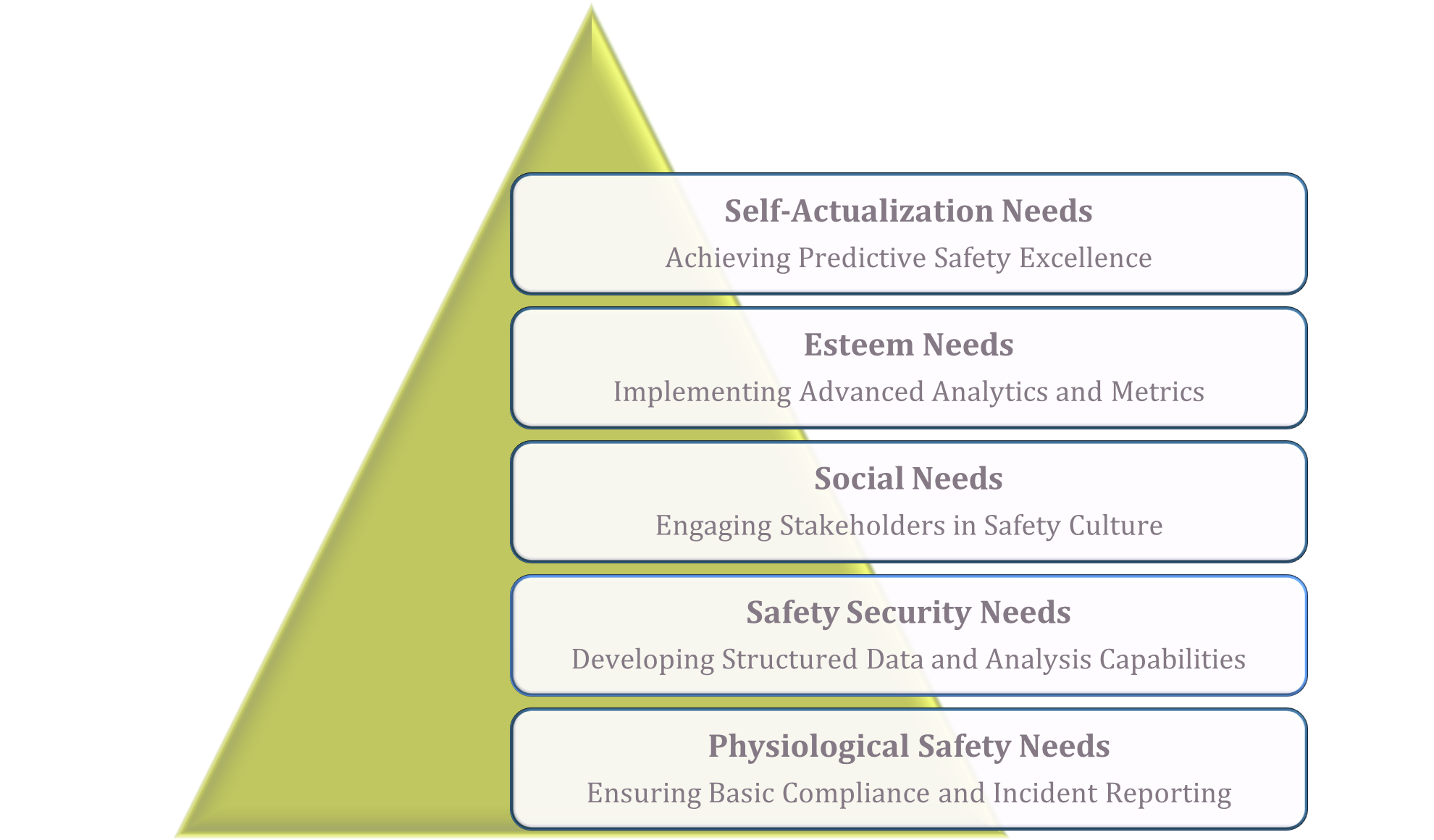The Safety Analytics Hierarchy of Needs

Environmental, Health, and Safety (EHS) professionals continually strive to create workplaces that are not just compliant but fundamentally safe. Most are familiar with the so-called Heinrich/Byrd Safety Pyramid, commonly referred to as the “Safety Triangle“. But in this post we talk about another pyramid. Borrowing conceptually from Abraham Maslow’s simplified Hierarchy of Needs, we can establish a layered framework for safety analytics that guides organizations from foundational safety compliance to the pinnacle of predictive safety excellence. This framework, much like Maslow’s, progresses from ensuring basic needs (safety compliance) to fulfilling the highest level of safety potential through predictive analytics.
1. Physiological Safety Needs: Ensuring Basic Compliance and Incident Reporting
At the base of our safety analytics hierarchy lies the fundamental need for basic compliance and incident reporting. This level focuses on meeting regulatory requirements and establishing a baseline of safety data collection. Organizations at this stage are primarily reactive, with an emphasis on capturing and reporting on incidents (‘reportables’) post-occurrence. The goal here is to ensure that the workplace meets minimum legal and ethical standards for safety.
2. Safety Security Needs: Developing Structured Data and Analysis Capabilities
Moving up the hierarchy, we focus on structuring safety data and developing initial analysis capabilities. At this level, organizations begin to organize and categorize safety incidents and near-misses systematically. This structured approach to data enables more detailed analysis of incident types, frequencies, and causes. The security here comes from understanding patterns and trends within the data, allowing for more targeted safety interventions.
3. Social Needs: Engaging Stakeholders in Safety Culture
In the middle of the hierarchy, the focus shifts to engaging employees, management, and other stakeholders in a culture of safety. This level leverages the data collected to foster a shared responsibility for safety. Analytics are used to communicate safety performance, celebrate improvements, and identify areas needing collective attention. Building a strong safety culture ensures that safety initiatives are supported and advanced by the entire organization.
4. Esteem Needs: Implementing Advanced Analytics and Metrics
Esteem needs in our safety hierarchy relate to the implementation of advanced analytics and the establishment of metrics for safety. At this stage, organizations use sophisticated analytical techniques to delve deeper into the data, identifying not just what happened but why. Predictive models begin to take shape, enabling the anticipation of incidents before they occur. Esteem is achieved through the recognition of proactive safety management and the establishment of best practices across the organization.
5. Self-Actualization Needs: Achieving Predictive Safety Excellence
At the pinnacle of the safety analytics hierarchy is the achievement of predictive safety excellence. Here, predictive safety analytics fully come into play, using advanced models and machine learning to forecast potential safety incidents and mitigate risks proactively. This stage represents the complete shift from reactive to predictive, where data informs strategic safety decisions before incidents can occur. Organizations operating at this level are not just managing safety; they are preemptively shaping a safer future.
Implementing the Hierarchy in Practice
For EHS professionals aiming to climb this hierarchy, it is important to recognize that progress is a journey that involves continuous improvement and commitment. Each level builds upon the last, requiring a solid foundation in data collection, analysis, and stakeholder engagement to move forward effectively.
In our safety analtyics practice we have established a safety analytics maturity model to help our clients chart out their journey. It is a preliminary assesment, scoring the organization with a five-level score within four elements of their safety processes and systems. You can read more about it in our book, Predictive Safety Analytics: Reducing Risk through Modeling and Machine Learning.
Numerous case studies demonstrate the successful application of safety analytics across various industries which can be explored for inspiration and guidance. For more detailed insights into how to implement predictive safety analytics within your organization, explore the details of our Predictive Safety Analytics offering.
Disclosure: much of this post was written by an AI with prompting and editing by a human expert.
